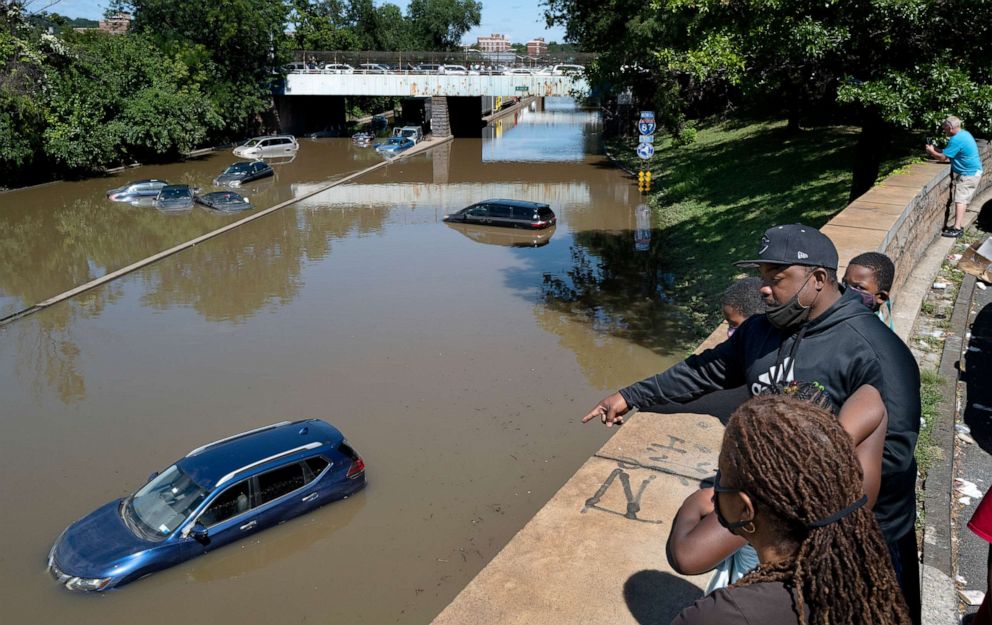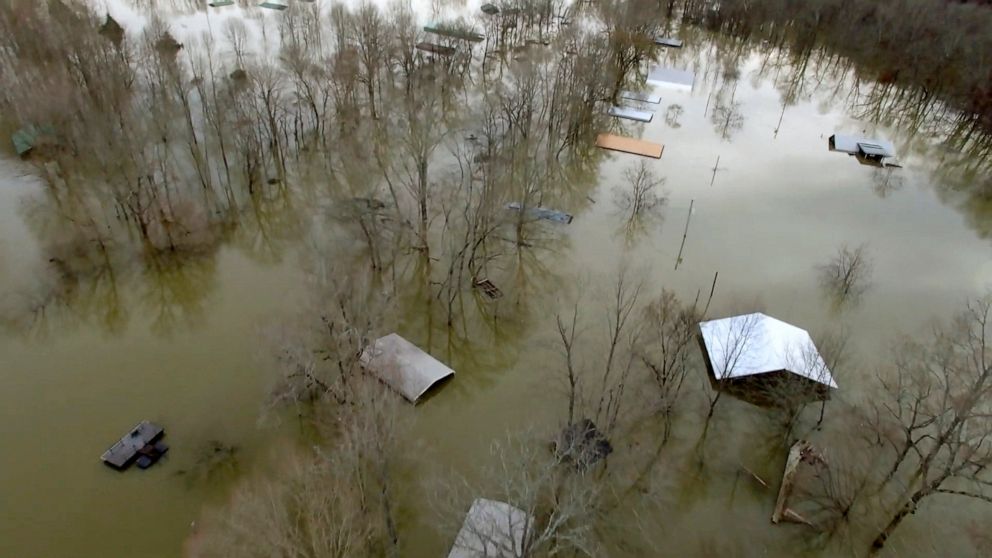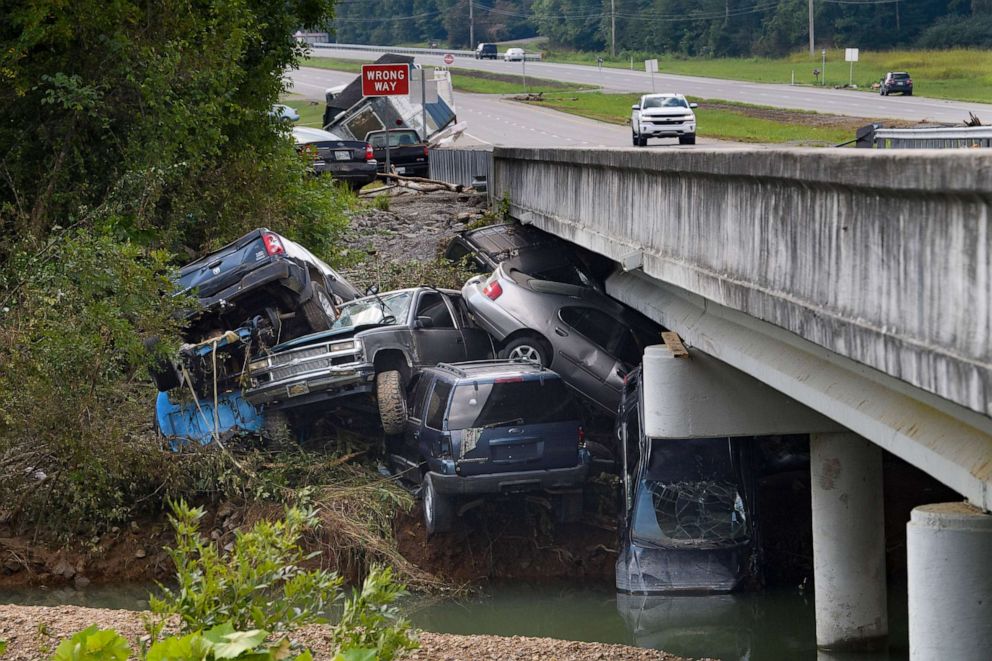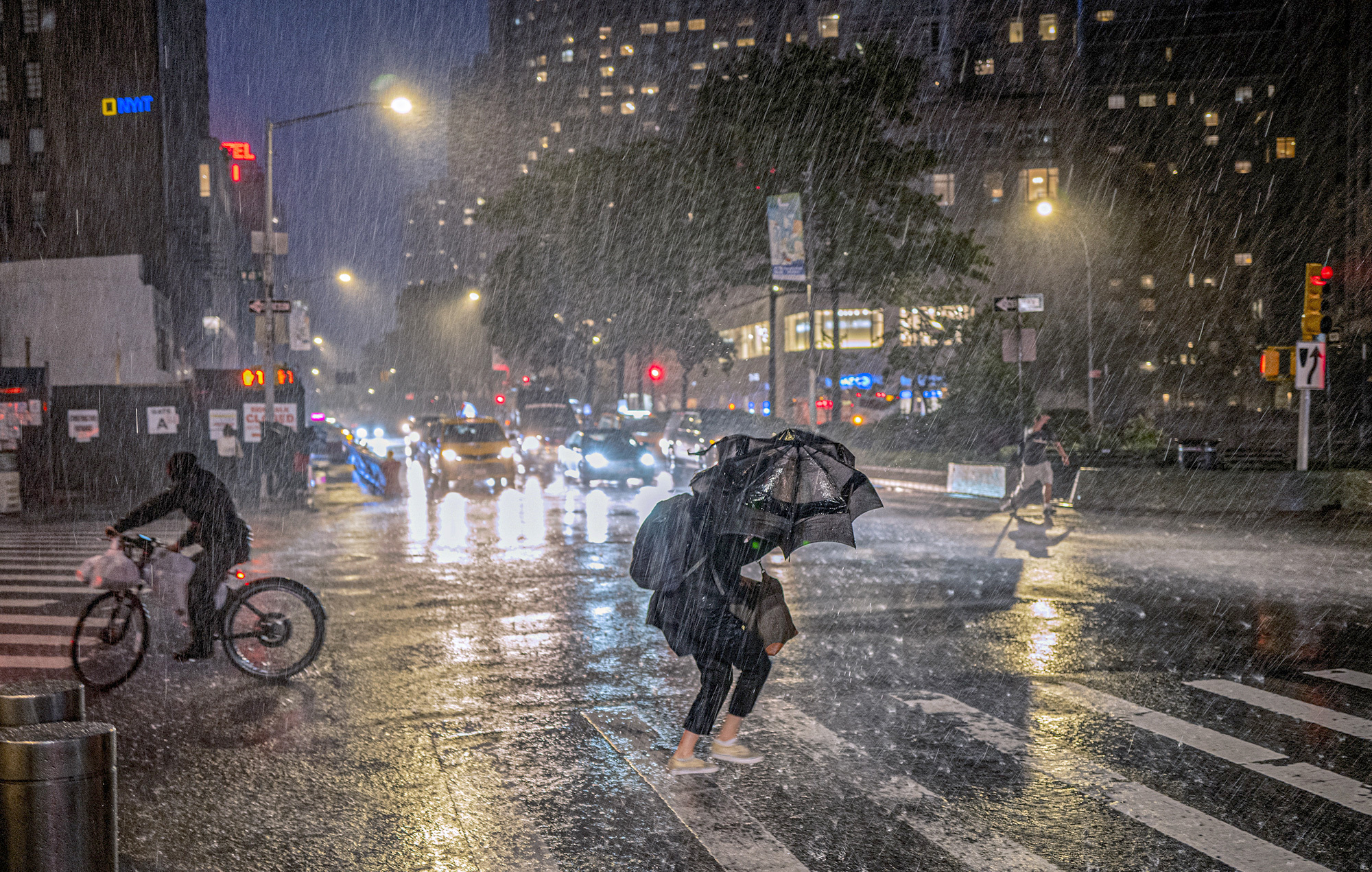Flood damage will increase due to climate change, will disproportionately affect poor communities: Study
Annual flooding damage costs in the U.S. could increase 26% by 2050.
Researchers are painting a clearer picture of how much weather events made more severe from climate change will cost communities in coming decades -- especially disadvantaged communities, which will likely bear the brunt of the losses.
Annual flooding costs in the U.S. could increase 26% by 2050 to $40.6 billion by 2050 as a result of climate change, the cost of which will be borne disproportionately by disadvantaged communities, according to a study published Monday in Nature.
Much of the historical and present-day flooding risk in the U.S. has been borne by poor white communities, but as climate shifts, Black communities in the South, along the Atlantic and Gulf coasts, are having to deal with the most changing risks, Oliver Wing, a hydrology and flood risk researcher at the University of Bristol and author of the study, told ABC News.
Low-income communities tend to be hit hardest by extreme flooding because they tend to be located in more flood-prone areas, have fewer resources to cope when a disaster hits and have a harder time accessing funding for the cleanup efforts after the flood, Kristina Dahl, a senior climate scientist at the Union of Concerned Scientists, told ABC News.
"That raises very important social justice implications for how we ensure that the policies to deal with this address this quite severe inequity," Wing said, describing it as "fundamentally unfair."

The results of the study are consistent with other recent research. A study published in Nature last month found that more rainy days from climate change could dampen economic growth and hurt global economies, while a 2021 study published in Nature found that poor communities will likely need to be compensated as a result of climate change policies.
A 2018 study conducted by the Union of Concerned Scientists found that, if greenhouse gas emissions continue as business as usual, 300,000 homes in coastal communities in the U.S., worth a combined $120 billion, will be at risk of chronic flooding, Dahl said.
In the U.S., the flooding will come from the coast as well as increased rainfall and riverine flooding across the country -- both of which are expected to increase as a result of climate change, Dahl said.
"We're seeing a trend over the last 50 to 70 years of more rainfall falling in kind of extreme events across most of the U.S.," she said. "Particularly in the Northeast region is where we've seen some of the biggest changes, and that's expected to continue with continued warming."

The level of granularity at which the research in this study was conducted -- using advanced modeling techniques, property-level asset data and climate projections -- is the first of its kind, Wing said, adding this is the first time scientists have been able to link a model of such resolution to climate change data.
One of the "most compelling" aspects of the research is that the model was not performed using a worst-case scenario but rather under RCP4.5 conditions -- a "middle-of-the-road" or "stabilization" scenario, in which the Intergovernmental Panel on Climate Change predicts emissions will peak around 2040 and then decline -- Wing said.
"It's not some very low likelihood, extreme possibility," Wing said of the results.

Any decarbonization that happens now will not affect the study's predictions over the next 30 years, as those results are "climatically locked in" and will take decades to respond to any adjustments in greenhouse gas emissions, Wing said.
"We could we could decarbonize right now, and, of course, we should do if we don't want these risks, to get any worse beyond 2050," he said. "But decarbonizing right now will not have any impact on the conclusions of our paper."
This means that the world has to adapt to the risks now because it's too late to alter the more immediate threats.
Researchers also projected how populations might change due to increased flooding, finding that the demographic shifts "far outweigh the impact of climate change" because population change can also cause an increase in flood risk, Wing said. Battling the impacts of climate change will require a balance between working on the climate side of the problem with producing resolutions based on where populations are residing.
"If we want to understand flood risk in the future, the most important thing is understanding where people are going to live, more so than how weather patterns are changing," he said.

Floods are just one of the many types of extreme events that scientists expect to get worse with climate change, Dahl said. Wildfires are expected to grow in size and severity. Hurricanes are expected to get stronger. Drought whiplash, which involves extreme rainfall one year and little precipitation the next, will become more common. Deaths from extreme temperature events, like the Texas freeze and Pacific Northwest heatwaves that occurred in 2021, will occur more often as well, she said.
The fact that people died shows "that we already can't cope with the weather," Dahl said.
"The infrastructure we have was designed for the climate of the past, and that's not the climate that we have today, and it's certainly not the climate we're going to have in the future. So we really desperately need to invest in building up our infrastructure and community-level resilience to extreme weather."




